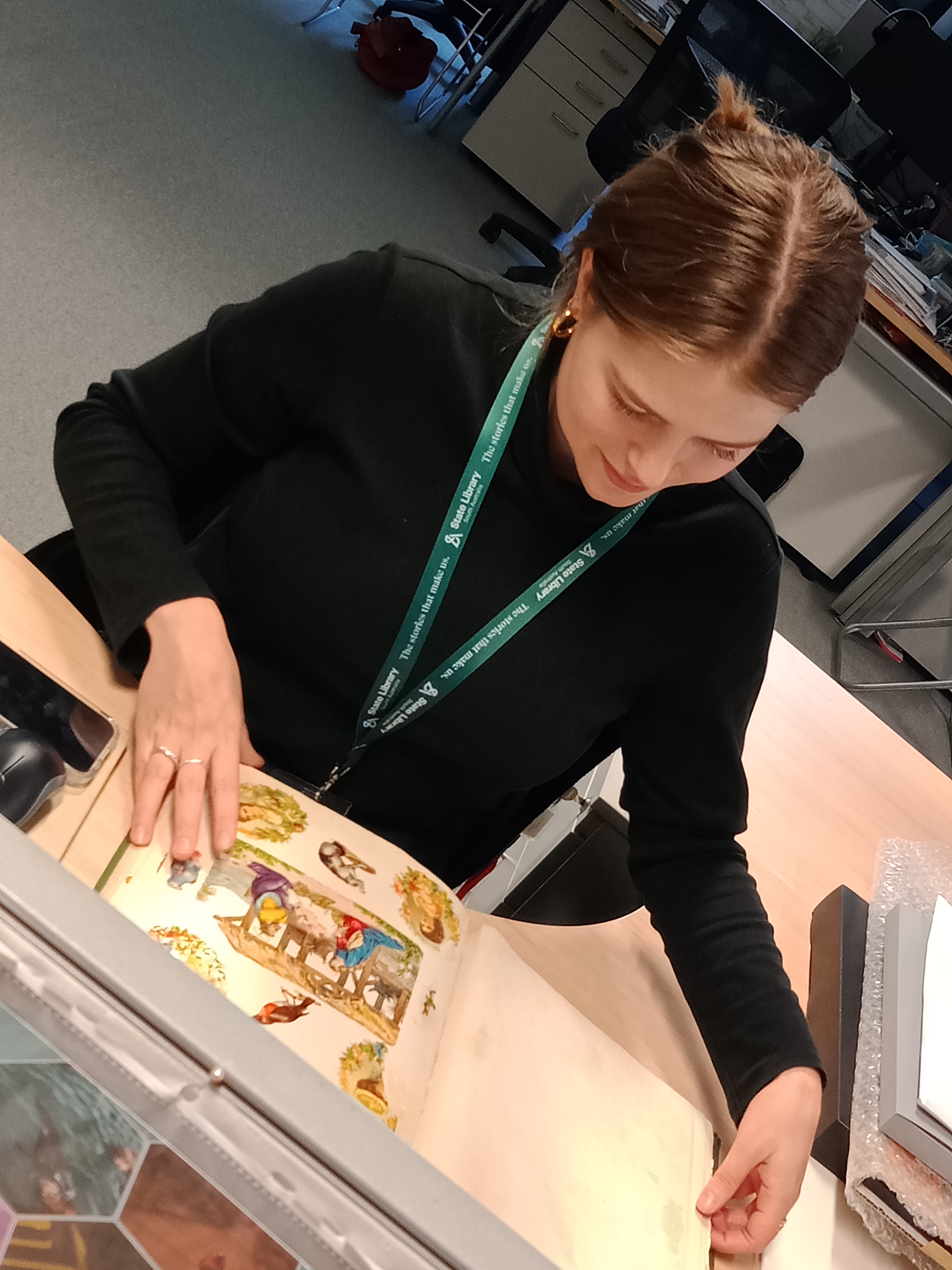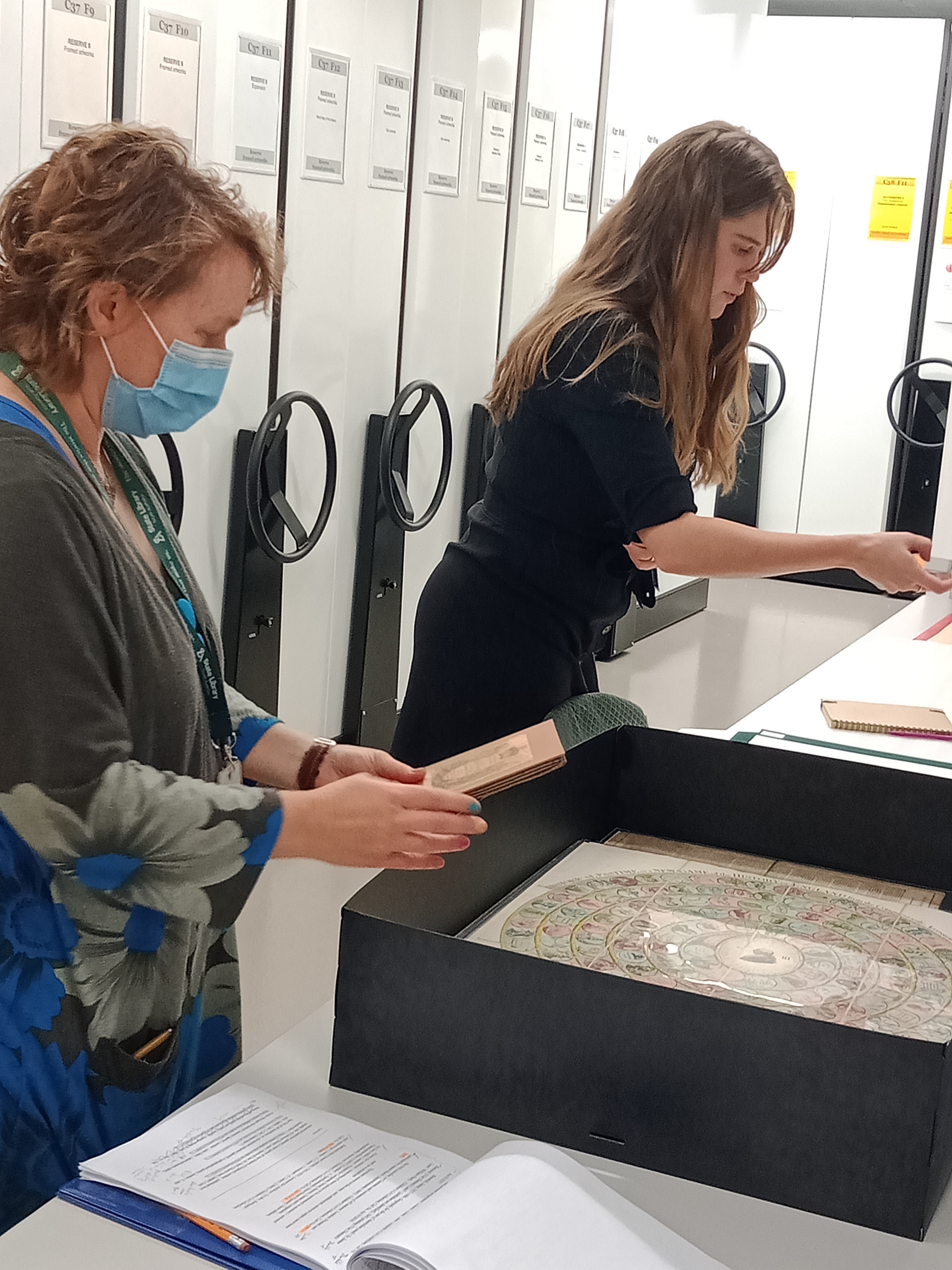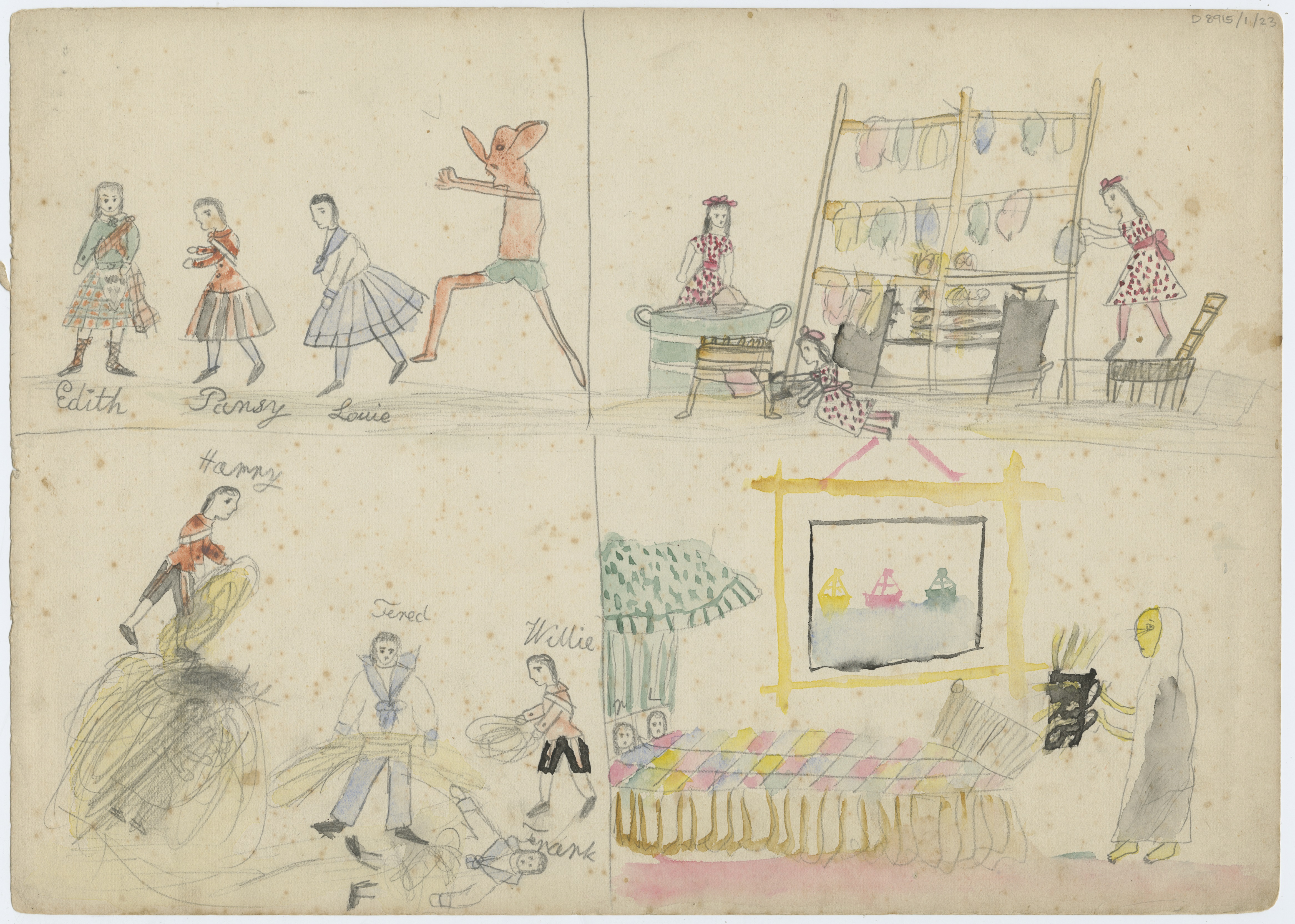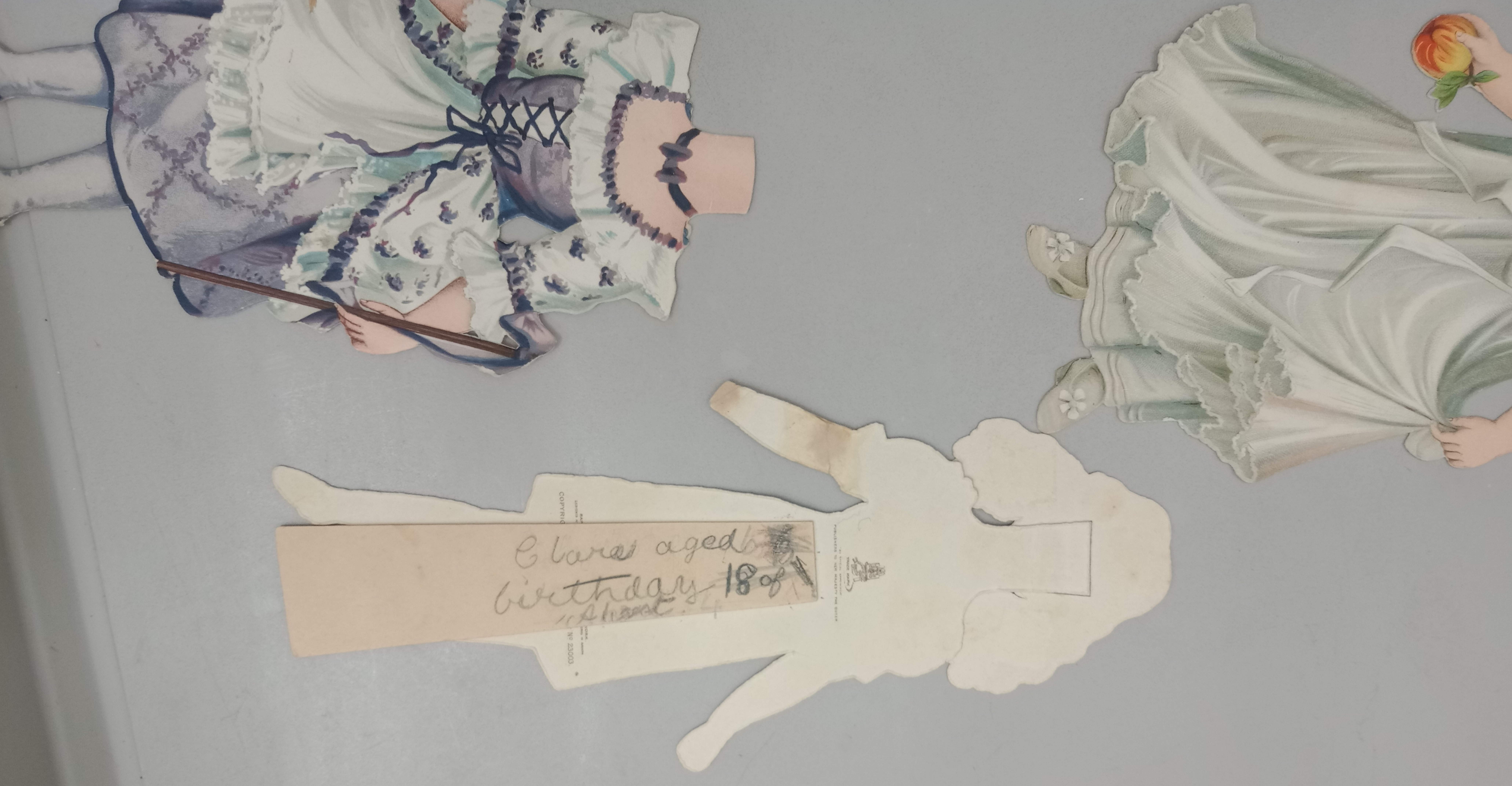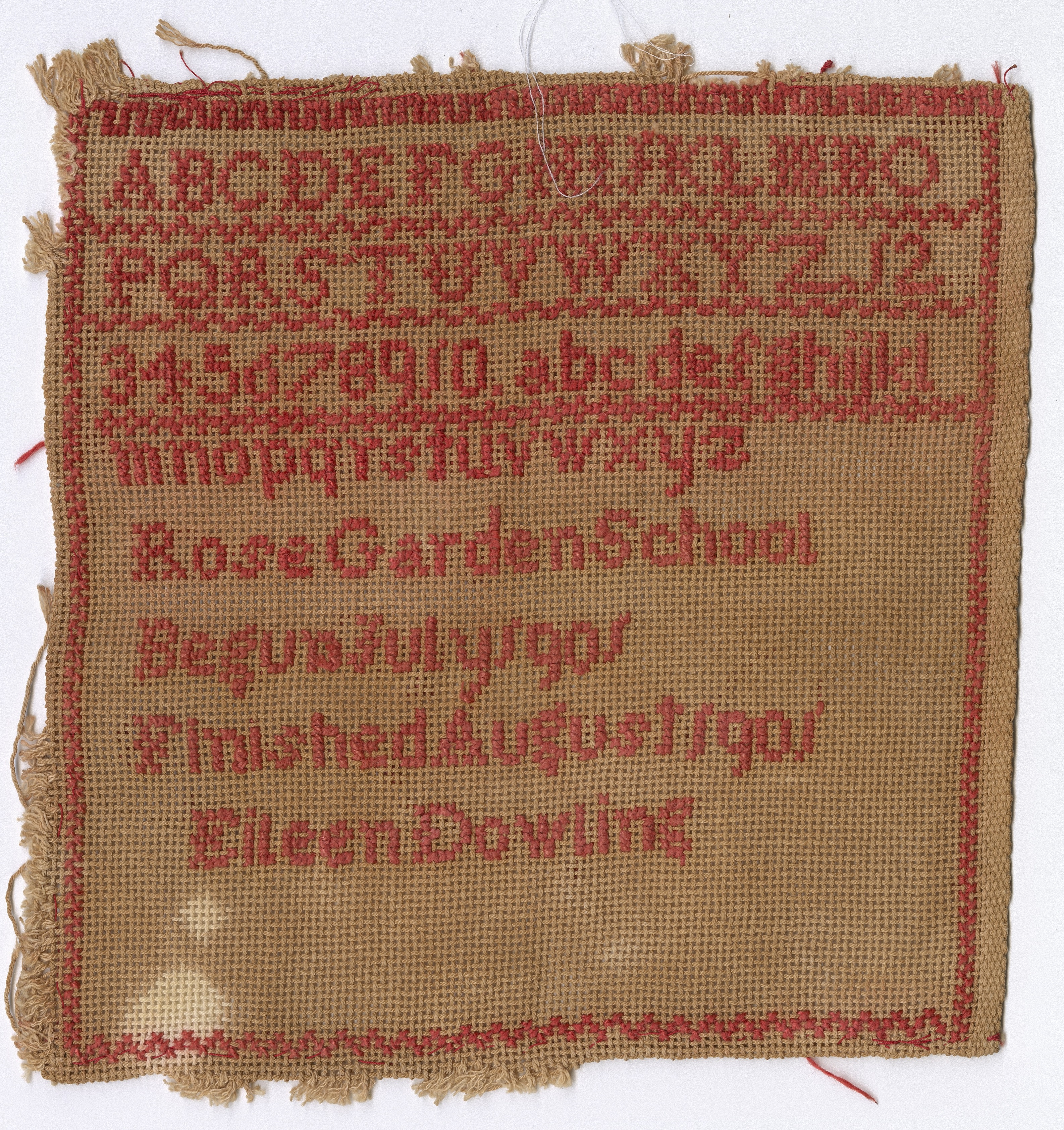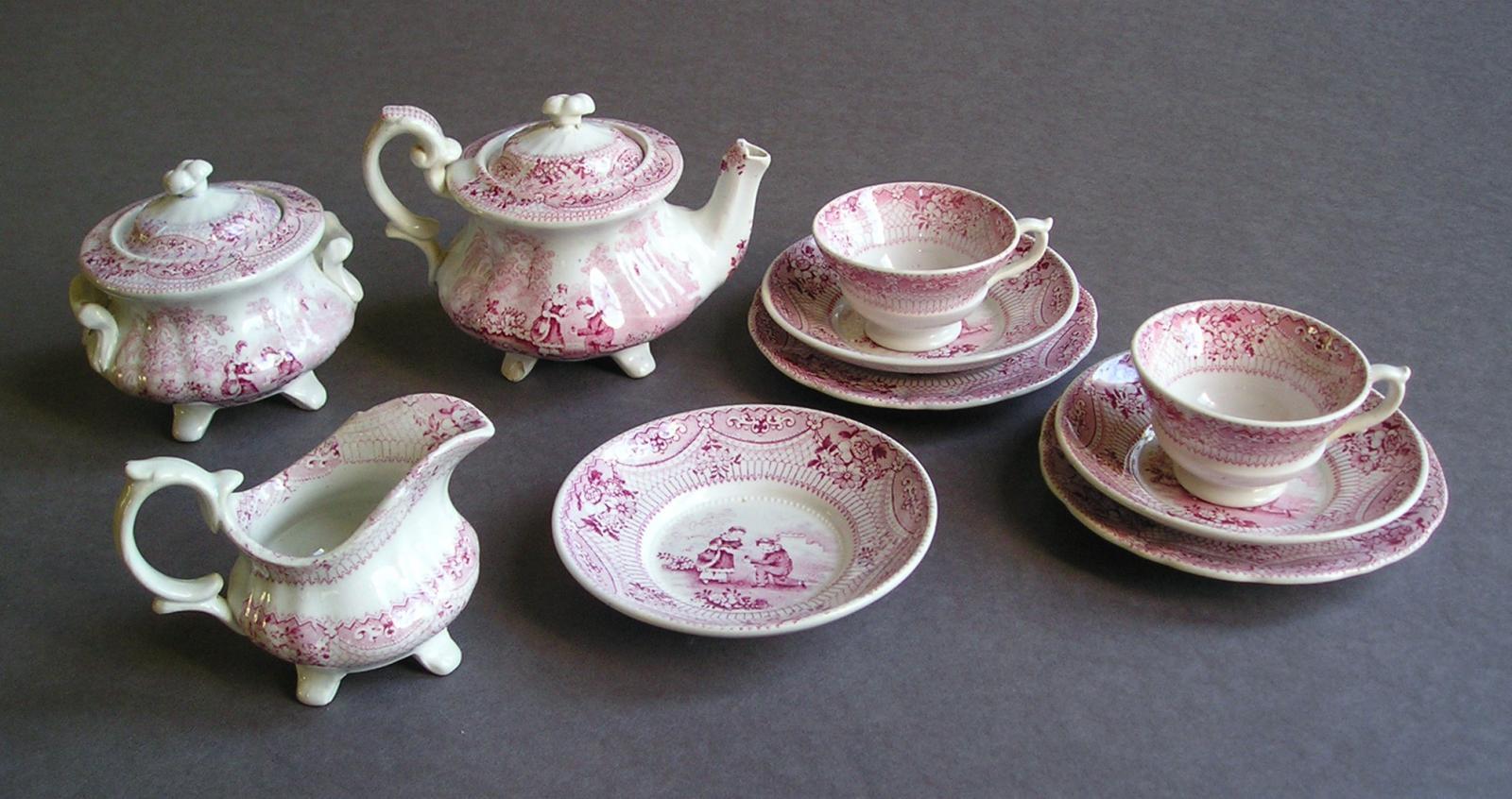
A visit from PhD scholar, Catherine Gay
Children’s viewpoints and voices are valued today, and now-a-days we seek to hear and record the opinions and creative works of children. Technology now allows children the freedom to create and share their own work worldwide. This was much less so in the past, where in the colonial world, information was recorded and published about well-known and powerful people who tended to promote and study the history of their own dominant group. Investigating the history of children, particularly girls, requires innovative approaches and the use of sources other than the written.
The State Library of South Australia was delighted to host children’s history scholar and PhD candidate, Catherine (Cat) Gay. Cat works within the School of Historical and Philosophical Studies at the University of Melbourne and is a recipient of a Hansen Trust PhD Scholarship, which fosters continued involvement in learning and writing about history. The focus of her current research is girls in 19th century Victoria and the objects they used, modified, or created themselves, their lived experience, and their elusive voice in the archive.
During the week of her visit, Cat accessed hundreds of artefacts held by the State Library, many of which were from the Children’s Literature Research Collection (CLRC), a special collection of toys, textiles, games, books and ephemera. Cat also examined artefacts from other parts of the State Library’s collection including embroidery samplers, artworks, photographs, letters, reminiscences, and digital files.
Cat said of the CLRC:
The Children’s Literature Research Collection is rare and internationally significant…Rarely does one find such an amount and array of child-produced and related artefacts in one holding. The 19th Century items in the CLRC are particularly significant. Most Australian collecting institutions have limited 19th century children's material compared to 20th century holdings. Of particular value are the provenanced collections, including those from the Lucy and Gilbert families. Often children's collections have little provenance or donor information. Being able to trace items to particular children is extremely valuable. The child-produced and influenced material culture is also highly significant. The needlework and homemade toys are evidence of children's play and skill. Many items, such as the textbooks and paper dolls, have children's inscriptions which are evidence of their voice and agency.
Cat’s visit was a great opportunity to share in-depth collection knowledge with other librarians. Knowledge management is a challenge for the memory institution sector, as it can take many years to develop a good grasp of rare and special collections. We were able to include an interested colleague in the hosting activities, to learn about curatorial practice for special collections. This turned out to be very successful, making the visit both collegiate and sociable.
Cat also investigated a set of pencil and watercolour drawings, by an unknown child artist, ca. 1880-1885. The artwork below depicts amongst other things, a child in a cage and a night-time haunting. Worse still in the set are drawings of drownings, goblins, a house fire, and Lear-like other-worldly characters. There are extremely detailed illustrations of houses, gardens, and a sailing ship, plus a collection of hand-made paper dolls.
Cat discovered a child had written a name (Clare) and some other information about birthdays on the backing support of a stand-up paper doll included in a set of ‘dressing dolls’ published by Raphael Tuck (1890s). The number 6 may be her age, and the '18 of' a possible date . This could be an indicator that the paper dolls may have been received for, and/or played with on a birthday or other special occasion.
Not only did Cat make discoveries for her research, but a missing object was located whilst working within the material culture (toys) collection – a maroon and white handmade woollen dress for a large doll. Don’t worry though, as all collecting institutions grapple with the issue of missing items on occasion, and there is great rejoicing (and record enhancement) upon their discovery.
Collaborating with scholars in this way can also help the Library improve how we describe artefacts and expand our overall knowledge about historical collections and their value. Cat explained the sociological significance of the embroidery samplers she accessed:
A girl's needlework sampler is often the only surviving or provenanced piece from a lifetime of sewing. Most girls, regardless of class or ethnicity, were taught to sew in the colonies—stitching was an essential feminine skill for future workers, wives and mothers. Most girls would make a sewing sampler as evidence of skills they had learnt from female relatives, governesses or teachers. In the 19th century, a sampler traditionally consisted of a square or rectangular piece of backing fabric (called the 'ground') on which ‘bands’ (or rows) of various combinations and types of stitches were placed. These could be the alphabet, numbers, symbols and motifs, decorative borders, commonplace verse or religious scripture, the name, age and location of maker, and date of production.
Samplers … can be read as a tangible reminder of girls’ often overlooked work. Daughters were essential members of the settler household and surviving needlework stands in for a lifetime of physical labour in the form of sewing, cleaning, cooking, washing, childminding, and other essential tasks.
And so after a busy week of too-ing and fro-ing in amongst Library collections, Cat spent a couple of days doing 'touristy' things in Adelaide, like visiting the Adelaide Central Market, and catching up with family.
When Cat’s final work is published the Library will receive a copy, and it will also be uploaded to the National e-deposit (NED) platform, a national service which provides for the deposit, management, preservation, and discovery of published electronic material across Australia. We are looking forward to reading an in-depth account of her findings about the artefacts she saw at the many collecting institutions she visited, and how they supported and challenged her theories.
Written by Denise Chapman, Curator - Engagement
Header image: Pink and white child's china tea set, 1890s, SLSA-CLRC Box no. 30
